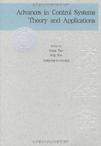控制系统理论及应用进展
2009-3
中国科学技术大学出版社
陶钢,孙静 主编
365
大学最重要的功能是向社会输送人才。大学对于一个国家、民族乃至世界的重要性和贡献度,很大程度上是通过毕业生在社会各领域所取得的成就来体现的。中国科学技术大学建校只有短短的五十年,之所以迅速成为享有较高国际声誉的著名大学之一,主要就是因为她培养出了一大批德才兼备的优秀毕业生。他们志向高远、基础扎实、综合素质高、创新能力强,在国内外科技、经济、教育等领域做出了杰出的贡献,为中国科大赢得了“科技英才的摇篮”的美誉。2008年9月,胡锦涛总书记为中国科大建校五十周年发来贺信,信中称赞说:半个世纪以来,中国科学技术大学依托中国科学院,按照全院办校、所系结合的方针,弘扬红专并进、理实交融的校风,努力推进教学和科研工作的改革创新,为党和国家培养了一大批科技人才,取得了一系列具有世界先进水平的原创性科技成果,为推动我国科教事业发展和社会主义现代化建设做出了重要贡献。据统计,中国科大迄今已毕业的5万人中,已有42人当选中国科学院和中国工程院院士,是同期(自1963年以来)毕业生中当选院士数最多的高校之一。其中,本科毕业生中平均每1000人就产生1名院士和七百多名硕士、博士,比例位居全国高校之首。还有众多的中青年才俊成为我国科技、企业、教育等领域的领军人物和骨干。在历年评选的“中国青年五四奖章”获得者中,作为科技界、科技创新型企业界青年才俊代表,科大毕业生已连续多年榜上有名,获奖总人数位居全国高校前列。鲜为人知的是,有数千名优秀毕业生踏上国防战线,为科技强军做出了重要贡献,涌现出二十多名科技将军和一大批国防科技中坚。
本书汇集了众多长期积极致力于控制系统理论及应用研究的学者的论文。这些学者绝大部分都来自于同一所母校——拥有五十年辉煌历史的中国科学技术大学。本书的结集出版也是为了庆祝2008年中国科学技术大学五十周年华诞。 本书共分十五章,涵盖了控制系统理论及其应用的许多方面。书中控制系统理论的具体内容有:自适应控制、分岔控制、数字控制、容错控制、H-infinity控制、学习控制、神经和模糊控制、非线性控制、优化、参数估计、预测控制、鲁棒控制、随机控制、系统辨识和变结构控制;控制应用的内容:包括飞行器飞行控制、建筑物震动控制、微机控制系统、医疗机器人、投资组合管理、机器人编队控制和智能结构。 本书的各个章节技术性强,内容丰富,可作为工程、应用数学和相关学科本科生、研究生以及相关科技工作者学习和研究控制系统理论及应用的参考书。
Preface to the USTC Alumni's SeriesPreface Gang Tao, Jing SunChapter 1 A Sensitivity-Based View to the Stochastic Learning and Optimization Xi-Ren Cao, Fang CaoChapter 2 Brief Review of Research on Robust Pole Clustering and Robust Structural Control Sheng-Guo WangChapter 3 Two Challenging Problems in Control Theory Minyue FuChapter 4 Developments in Receding Horizon Optimization-Based Controls: Towards Real-time Implementation for Nonlinear Systems with Fast Dynamics Jing Sun, Reza Ghaemi, Ilya KolmanovskyChapter 5 Multivariable Model Reference Adaptive Control Gang TaoChapter 6 On Computer-Controlled Variable Structure Control Systems Bin Wang, Xinghuo Yu, Xiangjun Li, Changhong WangChapter 7 Multi-Robot Formation Control Based on Feedback from Onboard Sensors Tore Gustavi, Maja Karasalo, Xiaoming HuChapter 8 Semiactive Control Strategies for Vibration Reduction in Smart Structures Ningsu LuoChapter 9 Identification and Control of Nonlinear Dynamic Systems via a Constrained Input-OutputNeurofuzzy Network Marcos Gonzgez-Olvera, Yu TangChapter 10 Decomposition-Based Robot Control Guangjun LiuChapter 11 From Adaptive Observers to Decoupled State and Parameter Estimations Qinghua ZhangChapter 12 Reduced-Order Controllers for the H∞ Control Problem with Unstable Invariant Zeros or InfiniteZeros Xin XinChapter 13 Recent Advances in Bifurcation Control Hua O. WangChapter 14 Intelligent Medical Robot Application -- Tele-Neurosurgical Robot Case Stud Weimin Shen, Jason Gu, Yanjun ShenChapter 15 Applications of Stochastic Control Theory in Portfolio Management Tao Pang
插图:It is now established that structural control is an important issue ondesigning new structures and retrofitting structures for earthquakes and winds[1]. Structural control had its roots primarily in such aerospace related problems and in flexible space structures. Then, it was moved quickly into civilengineering and infrastructurerelated issues, such as building and bridge protection against extreme loads such as earthquakes and providing human comfort in the structure during noncritical times [2]. Structural control involvesnowadays the integration of diverse disciplines such as computer science, dataprocessing, control theory, material science, sensing technology, stochastic processes, system dynamics, mechanics, etc, focused to engineering areas as mechanical, civil, naval, aerospace, etc. Researchers have developed structuralcontrol systems since approximately 100 years ago when John Milne, professor of engineering in Japan, built a small house of wood and placed it on ballbearings to demonstrate that a structure could be isolated from earthquakeshaking. However, only laboratory level applications were reached out. In the1960s, the concept of passive control was applied to buildings and bridges inthe form of base isolation schemes. Concepts such as active and semiactivecontrol are not more than 30 years old in structural control [3]. In this sense,the structural control Can be considered as relatively new in the control fieldand several limitations have been present during the development of controlmethodology and its application. This research will focus on control theory issues outlining some of the most relevant methods adopted to cope with specificfeatures of vibration control for smart structures.
《控制系统理论及应用进展(英文版)》为当代科学技术基础理论与前沿问题研究丛书,中国科学技术大学校友文库教材之一。
